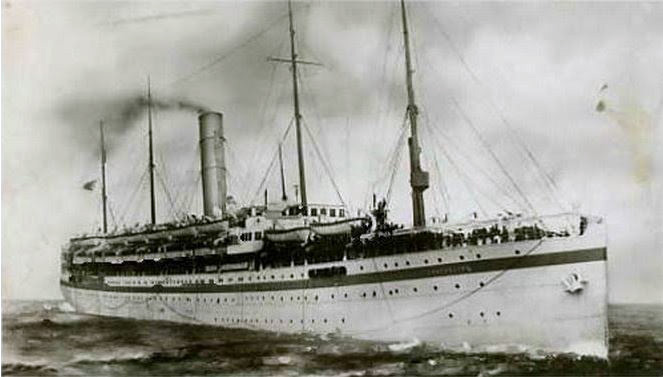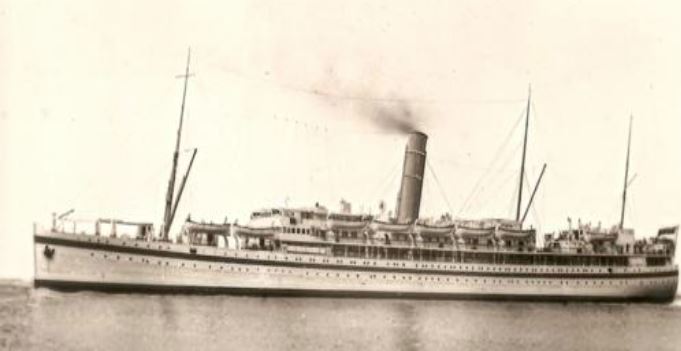SS Lancashire
From Our Contribution
Remarks
Laid down in August 1914, her construction was delayed by the war and she wasn't launched until 11 Jan 1917. She was completed in the following July, albeit in austere style, and sailed from Birkenhead to Rangoon in August 1918 under the Liner Requisition Scheme. In November 1918 she commenced repatriating French prisoners of war and later Belgian refugees before being released from the Liner Requisition Scheme on 13 Dec 1918. In January 1919 she was deployed on trooping duties, firstly from Antwerp and Plymouth to Australia, and then from the UK to the USA. She was released back to Bibby's in 1920 and whilst waiting to return to Harland and Wolff she was placed on the Birkenhead to Rangoon service. Finished to Bibby standards and converted to oil burning during 1921, she then returned to troopship duties in the company livery. In 1923 she had a fire in her cargo when at Tilbury and then in 1924 she had a fire in her cargo of rice meal when she was approaching Marseilles. On 28 Apr 1930 work was started at Camnmell Laird & Company at Birkenhead to convert her into a permanent troopship.
In November 1939 she was the commodore ship in a convoy which included the Devonshire and five British India ships sailing between Bombay and Marseilles with the first contingent of the Indian Expeditionary Force. On 'D' Day, 6/7 Jun 1944, she acted as commodore ship for convoy ETP 1 and sailed from the Thames to Juno Beach in Normandy in line ahead with the Cheshire, Worcestershire and Devonshire.
In 1945 she was converted into a depot and store ship for the British Pacific Fleet and sailed from Liverpool with 500 technicians bound for Hong Kong where the engineers were used to restore public services and to get the dockyard operating. She then assisted with the repatriation of sick troops.
In 1946 she was refurbished by Harland & Wolff at Govan into a peacetime troopship and trooped continuously to Cyprus, India and the Far East for the next ten years. In 1956 she was replaced by the Oxfordshire and was broken up by Thomas W. Ward at Barrow-in-Furness in February.
Soldiers carried
England to Fremantle 7 February - 21 March 1919
- Leslie James Godfrey
- George Joseph Harris
- Eaneas Malthais Lorenz moved to the district post WW 1.
- Henry Joseph Milne
- John Francis Ullyott

